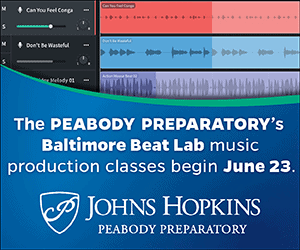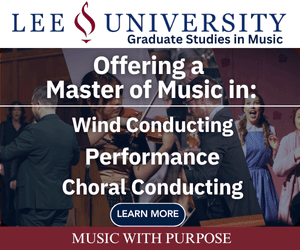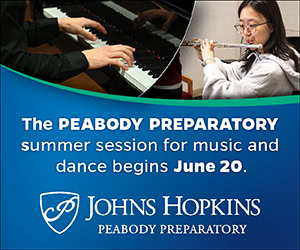NAfME BLOG
Resources for Learning the Violin Audition Excerpt: Beethoven Symphony No. 7, Mvt. 2

/ News Posts / Resources for Learning the Violin Audition Excerpt: Beethoven Symphony No. 7, Mvt. 2
Resources for Learning the Violin Audition Excerpt:
Beethoven Symphony No. 7, Mvt. 2
By NAfME Member Tomás Cotik
Copyright © by Tomás Cotik – All rights reserved.
The April 2021 issue of Teaching Music included an article by Tomás Cotik on guidelines for recorded auditions. This is article one of six supplementing that article.
Below, you will find a brief introduction about the piece followed by a couple of recommendations of orchestral recordings and a list of concise advice that focuses on solving the usual problems that I have seen students confront in terms of rhythm, bow strokes, articulation, dynamics, vibrato, intonation, and phrasing when working on this excerpt. Please take any advice only as a guide; any recommendation or list of typical tendencies does not apply to every student. Slow, mindful practice, continued work on the basics (Intonation, Rhythm, and Sound), recording yourself regularly, and feedback from a teacher is at least as important! At the end of the document, you will find a score with the fingerings and bowings I used in the video as well as the orchestral score of the excerpt.
Watch my own video recording of this excerpt on YouTube.
Background
Beethoven’s seventh symphony was premiered in Vienna on December 8, 1813, at a charity concert for soldiers wounded in the Battle of Hanau. Beethoven led the orchestra in the first performance of this work, which he composed between 1811 and 1812 while visiting the spa town of Teplice in an effort to improve his health. The second movement, Allegretto, was instantly popular and afterwards was often performed as a standalone piece.1 Structured in a double variation form, this funeral march brings together several contrasting melodic ideas played at once over an ostinato of a quarter note, two eighth notes, and two quarter notes.2
Listen:
Follow along with the full score3 as you listen to various recordings. A few examples:
- You can start with this recording of Kleiber with the Concertgebouw Orchestra (I would be surprised if you are able to resist listening to the complete recording!).
- You can hear another version of Karajan with the Philharmonia Orchestra.
- For curiosity’s sake, here is an interesting version of Furtwängler with the Berlin Philharmonic.
Rhythm:
- Remember the varying importance of the beats in the bar. Generally speaking, there should be a strong beat one, and a “weak” beat two. Likewise, the “and”s of beat one and beat two should be weaker than the main beats.
- Don’t lengthen the second quarter notes of the bars, nor play them louder than the previous beat.
- Don’t rush the eighth notes.
Articulations:
- Be thoughtful of the articulation of every note.
- Keep the bow on the string and create resonance between each note (use vibrato and release the end of each stroke). Don’t completely stop the bow as this will stop the resonance.
- Make sure not to rush during the articulated notes (if you shorten a note, wait/create more space before the start of the next note).
- The first sixteenth note following the dotted quarter note needs to speak clearly every time.
Vibrato:
- Use centered and narrow vibrato at the beginning.
- I like thinking that the vibrato should start/be fastest right at the beginning of each note.
- You can almost use the vibrato to fill in the sound as a kind of subdivision.
- At least when you practice, try to use vibrato on all eighth notes and sixteenth notes.
- Be sure that the vibrato doesn’t get stuck or stop randomly.
Dynamics:
- One of the big challenges in this excerpt is to do the crescendos and diminuendos seamlessly throughout the excerpt. One way to achieve this is to think of the passages as “terraced” in order to keep the classical articulations and syntax clear. So instead of increasing the dynamic by individual notes, you could choose to increase the dynamic slightly with each motive.
- To achieve the change in dynamic, vary the amount of bow to help the crescendos/diminuendos happen naturally instead of adding pressure to the bow. If you do add pressure, make sure that you complement it with vibrato to get a rich sound. Think of the bow as a “measuring tape.” I start the excerpt with a short bow at the tip and expand the stroke as the dynamic increases.
- Make sure that the dynamics and phrasing don’t alter the tempo.
- From measure 75 (ff) on, the challenge is to keep the long line moving, without rushing. Feel the subdivision in sixteenth notes. Use all of the bow with a generous and free motion. Eliminate large gaps of sound at the bow changes. Think of spreading Nutella to the very corners of a piece of bread—connect each note to the next one.
Phrasing:
- Be aware of not creating unwritten accents in an effort to recover the bow. It will help to practice on open strings to realize what the bow is actually doing. Keep your right elbow flexible, like a freshly oiled hinge.
- Don’t accent the arrivals/last notes of a phrase.
- At the same time that you do the articulations, create a long line. It can be helpful to sing the long line in your mind.
- Keep the march steady: make sure not to rush the written sixteenth notes and to subdivide the rests.
- I prefer leaning strongly on the beat on the first note of the grace notes/appoggiaturas. Some musicians prefer weak accents that occur before the beat.
- Use expressive intonation and keep leading tones tight.
- Play the second violin part from the score to help you hear the contrasting melody while the firsts play the main motive. In the ff section, the roles reverse and the main motive is played by the winds.
- The whole excerpt should feel like one musical unit or one long phrase.
Beethoven Symphony No. 7, Mvt. 2, Violin I
Beethoven Symphony No. 7, Mvt. 2, Full Score
Notes:
- “Symphony No. 7 (Beethoven).” 2020. Wikipedia. Wikimedia Foundation. April 18. https://en.wikipedia.org/wiki/Symphony_No._7_(Beethoven).
- Schwarm, Betsy. 2017. “Symphony No. 7 in A Major, Op. 92.” Encyclopædia Britannica. Encyclopædia Britannica, inc. January 3. https://www.britannica.com/topic/Symphony-No-7-in-A-Major-Opus-92.
- The attached scores are published by Breitkopf & Härtel. Complete scores can be found on IMSLP.
About the author:

Photo: So-Min Kang Photography
Hailed by Michael Tilson Thomas as “an excellent violinist,” Dr. Tomás Cotik was a first-prize winner at the National Broadcast Music Competition in his native Argentina in 1997, and the winner of the Government of Canada Award for 2003-2005. An avid recording artist, Dr. Cotik has recorded fifteen CDs for Naxos and Centaur Records, which have received enthusiastic reviews from publications such as Gramophone, Fanfare, American Record Guide, Downbeat, and MusicWeb International. Dr. Cotik was a rotating concertmaster with the New World Symphony and has performed hundreds of recitals and chamber music concerts across the globe. Committed to passing on his passion for music, Dr. Cotik was appointed Assistant Professor of Violin at Portland State University in 2016. He previously taught at West Texas A&M University, Florida International University, and at the University of Miami’s Frost School of Music. His articles about pedagogy have been published in renowned international publications such as The Strad, the American String Teacher Journal, and the American Music Teacher Journal.
E-mail: tcotik@pdx.edu
Website: www.tomascotik.com
Did this blog spur new ideas for your music program? Share them on Amplify! Interested in reprinting this article? Please review the reprint guidelines.
The National Association for Music Education (NAfME) provides a number of forums for the sharing of information and opinion, including blogs and postings on our website, articles and columns in our magazines and journals, and postings to our Amplify member portal. Unless specifically noted, the views expressed in these media do not necessarily represent the policy or views of the Association, its officers, or its employees.
February 17, 2021. © National Association for Music Education (NAfME.org)
Published Date
February 17, 2021
Category
- Ensembles
Copyright
February 17, 2021. © National Association for Music Education (NAfME.org)



